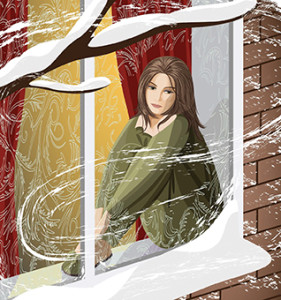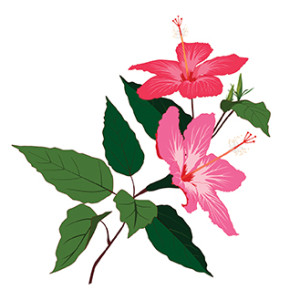Are we unfair to Junk Food? (and more…)
Posted on December 1, 2015 by bob in NewsUCanUse
Junk food: Unfair Target?
Junk foods are often painted as prime culprits in the national discussion of obesity. While a diet of chocolate bars and cheese burgers washed down with a soft drink is inadvisable from a nutritional standpoint, these foods are not likely to be a leading cause of obesity in the U.S., according to a new Cornell University Food and Brand Lab study. The study, published in Obesity Science & Practice, finds that intake of these foods is not related to Body Mass Index in the average adult.
Researchers found consumption of soda, candy and fast food is not linked to Body Mass Index (BMI) for 95% of the population. The exception is those on the extreme ends of the BMI spectrum: the chronically underweight and morbidly obese. Researchers concluded that diets and health campaigns aimed at reducing and preventing obesity may be off track if they hinge on demonizing specific foods. The study suggested that if real change is desired, overall diet and physical activity must be examined rather than targeting junk foods.
Clinicians and practitioners seeking to help individuals obtain a healthy weight should examine how overall consumption patterns, such as snacking and physical activity, influence weight instead of just eliminating “junk foods” from patient’s diets.
— Cornell University, Food & Brand Lab. ScienceDaily, November 2015.
Long-distance Caregiving
Taking care of an older relative or friend in another city or state can be challenging. The National Institute on Aging (NIA) offers tips to help meet this challenge.
1) Get written permission to receive medical and financial information.
2) Build on each family member’s or caregiver’s personal strengths when sharing responsibilities.
3) Find adult day care, in-home assistance, transportation, and other services in the older person’s area that might be useful.
The NIA provides practical tips and resources on-line. Visit the following:
— National Institute on Aging, National Institutes of Health
Parental Challenge
Two-parent households in which both parents work full time has risen to 46%, up from 31% in 1970. In economic terms, families with two full-time working parents are better off than other families, but balancing work and family poses challenges. More than half of all working parents say it is difficult to balance the responsibilities of their job with the responsibilities of their family. Among working mothers 41% report that being a parent has made it harder for them to advance in their career. Twenty percent of fathers say the same thing about their own careers.
In families with both parents working full-time, respondents say they share equally in such tasks as household chores and responsibilities, disciplining, and playing or doing activities with the kids. But many respondents say day-to-day parenting responsibilities fall to mothers.
— Pew Research Center: Social and Demographic Trends
Talk Away Winter Blues
Talk outshines light in keeping the winter blues at bay, according to a University of Vermont researcher. More than 14 million Americans suffer from Seasonal Affective Disorder (SAD), ranging from 1.5% of the population in southern states such as Florida, to more than 9% percent in the northern regions of the country. An estimated 10 to 20% of all cases of recurrent depression follow a seasonal pattern.
In the two-winter study, one group of subjects was given light therapy, the other group cognitive-behavioral therapy (CBT), where they received one-on-one counseling. Of the subjects receiving light therapy, almost twice as many as those receiving CBT reported a recurrence of depression. Depressive symptoms were also more severe for those who received light therapy.
Light therapy requires the subject to take active steps to maintain treatment. After the second winter only 30% of light therapy subjects were still using the equipment. Once SAD sufferers learned the basic skills of cognitive-behavior therapy, it appeared to have a longer-term value. An early study showed both methods were effective in treating SAD during the first winter they were administered.
— University of Vermont American Journal of Psychiatry
Water Workout For Joint Pain
Exercise is an important tool for anyone of any age aiming to stay healthy and fit. But for many older people, arthritis and osteoporosis can make movement difficult, causing pain or limiting mobility. The good news is that there’s a kinder, gentler way to improve cardiovascular and muscular strength. Water-based workouts are among the best exercise programs for older adults.
Engaging in water exercise offers a host of benefits while preventing the stress and discomfort of land-based sports. The exercises, similar to those done on land, are performed vertically in shallow water ranging from waist to chest deep, and you don’t need to know how to swim to participate. Because water buoys joints and muscles, there’s a significant reduction in impact and stress on the body as well as a reduced risk of falling.
A recent six-month study of water-based exercises saw improvements in upper- and lower-body strength, flexibility, balance and aerobic capacity, including improved shoulder flexibility measured by the ability to reach various parts of participant’s own backs.
Wear a comfortable swimsuit and invest in aquatic shoes for stability and to protect your feet from rough pool surfaces and fungal infections like athlete’s foot. Pool shoes are a must if you have diabetes.
— Arthritis, November, 2015
Colorful, winter-hardy hibiscus
Like artists using paint on a palette, the research team at Texas A&M AgriLife Research center created the first blue-flowering winter-hardy hibiscus three years ago. The same team has now come up with a new salmon-colored garden jewel. According to researchers, until a few years ago hibiscus were available only in white, pink and red. In contrast to its distant cousin the tropical hibiscus, the winter-hardy hibiscus has a very narrow genetic potential for new colors to appear in the process of selective breeding. More time has also been spent in developing new color combinations in tropical hibiscus.
To date, the team has created more than 8,000 hybrids among the four native species, resulting in not only the blue-flowering hibiscus, but numerous other colors including maroon, magenta, dual-colored flowers and the newest with salmon-colored flowers.
— Texas A&M AgriLife Communications, ScienceDaily, Nov. 2015









